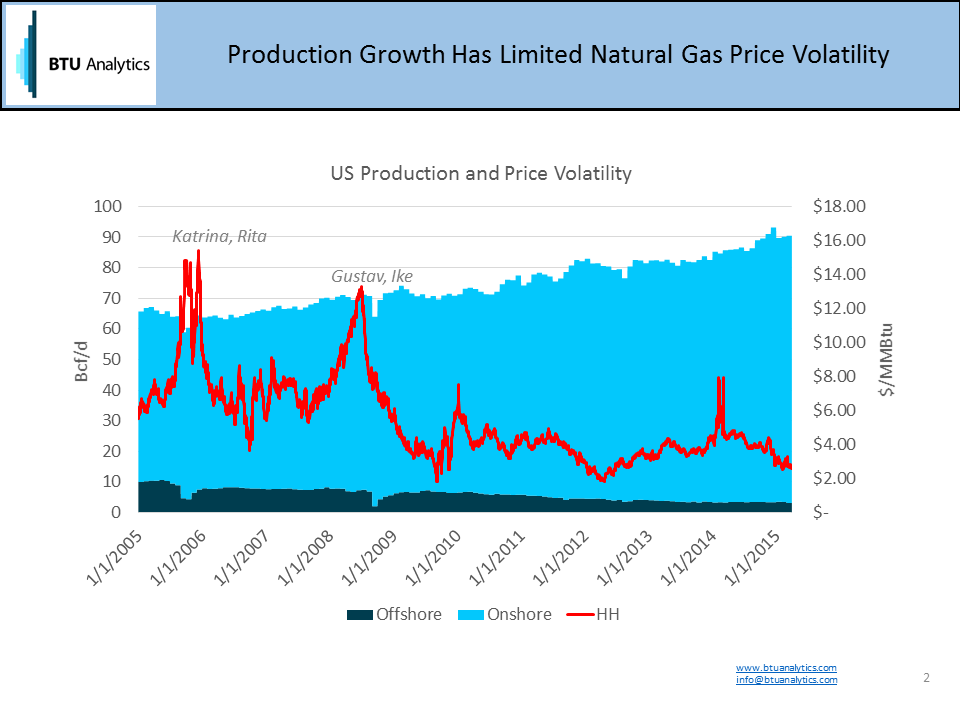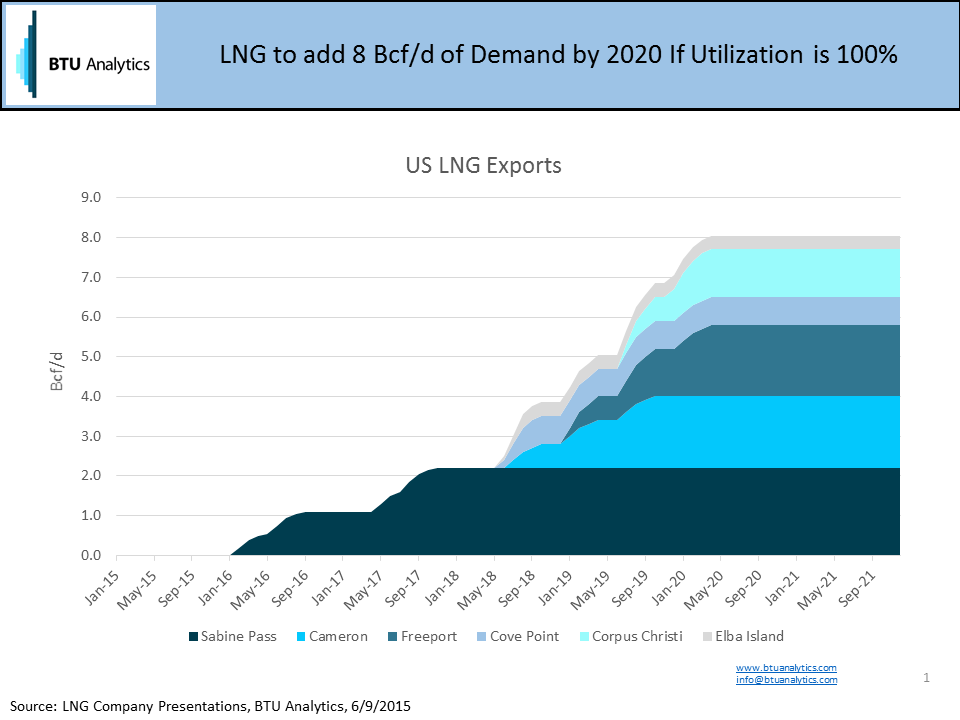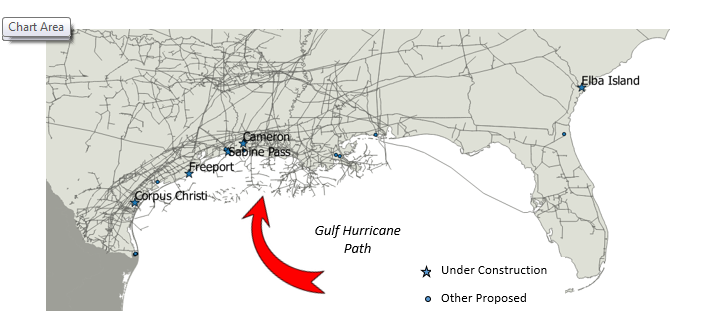Hurricane season is here.
The Atlantic hurricane season runs officially June through October. Historically, hurricanes have brought natural gas price spikes as the storms resulted in the interruption of oil and gas production in the Gulf of Mexico. Back in May 2005, hurricanes Katrina and Rita shut-in over 500 Bcf of gas and sent natural gas prices from $6.00/MMBtu to $10.00/MMBtu. In 2008, hurricanes Gustav and Ike also caused significant production disruption and gas prices again reached $10.00/MMBtu levels. Offshore Gulf natural gas production has never recovered to levels seen prior to those hurricanes, but onshore gas from shale formations has more than mitigated the loss from the gulf, setting record high levels of U.S. gas production. For the past few years, record high production levels have limited natural gas price volatility. But this is about to change.

BTU Analytics expects production to continue growing in the upcoming years providing supply reliability for U.S. demand, so how will hurricanes have an impact on price volatility?
Natural gas prices will now react to demand side changes. Winter of 2014 already proved this when the Polar Vortex event brought extreme cold temperatures in Jan and Feb sending gas prices from $4.00/MMBtu levels to high $7.00/MMBtu.
Now, under normal weather conditions, BTU Analytics forecasts some ResComm demand growth due to population trends, conversions and low gas price environment. More significant growth is expected from power burn driven by coal retirements, new natural gas builds and increased utilization rates due to economic fuel switching. However, projected demand growth from these components will be easily outpaced by production. The largest and most significant demand growth for the U.S. market will be LNG exports.
Over 20 LNG export projects have been proposed so far with 15 of them located in Texas and Louisiana. The list continues to grow as Cheniere announced yesterday two additional project developments by adding two liquefaction trains to the existing Corpus Christi project in Louisiana.
Based on the development process and long term contracts, BTU Analytics expects up to 8 Bcf/d of demand from LNG by 2020 with the first exports expected as soon as the end of this year. The following 6 LNG facilities are included in this projection: Sabine Pass, Cameron, Freeport, Cove Point, Corpus Christi and Elba Island.

Future hurricane activity will still impact production in the Gulf of Mexico, but price volatility will now be caused by LNG export disruptions, which will cause prices to plummet and will force the excess supply to be shut in or put into storage.

NOAA and CSU experts anticipate lower-than-average hurricane activity in 2015 due to El Nino activity, which is good news for LNG project construction (should cause no delays) and Gulf production but it also means minimal to no impact to price volatility this summer.
As LNG export demand materializes in the near future, price volatility will return to the natural gas market during the summer season. Any imbalance of the supply and demand equation will challenge energy producers, consumers and LNG operators to respond to demand curtailments particularly in the summer when U.S. demand is at its lowest level. Gas traders and marketers will have the opportunity to capitalize on the value volatility creates by helping to balance the market during a major event like a hurricane.
Since hurricane disruptions have a short-term impact, storage in the Gulf is ideally positioned to balance the market. Specifically, Salt Dome storage facilities provide the highest value due to their flexibility to perform several injection and withdrawal cycles. Over 400 Bcf or 10% of the U.S. working gas capacity belongs to salt dome facilities, and it’s almost entirely located in the Gulf.
With LNG export projects continuing to march ahead and US producers eagerly awaiting this new source of demand, keep your eyes on the gulf for the next big bear.









